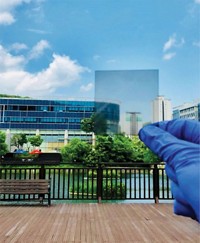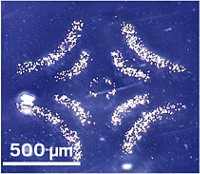Advertisement
Grab your lab coat. Let's get started
Welcome!
Welcome!
Create an account below to get 6 C&EN articles per month, receive newsletters and more - all free.
It seems this is your first time logging in online. Please enter the following information to continue.
As an ACS member you automatically get access to this site. All we need is few more details to create your reading experience.
Not you? Sign in with a different account.
Not you? Sign in with a different account.
ERROR 1
ERROR 1
ERROR 2
ERROR 2
ERROR 2
ERROR 2
ERROR 2
Password and Confirm password must match.
If you have an ACS member number, please enter it here so we can link this account to your membership. (optional)
ERROR 2
ACS values your privacy. By submitting your information, you are gaining access to C&EN and subscribing to our weekly newsletter. We use the information you provide to make your reading experience better, and we will never sell your data to third party members.
Photonics
Chipmakers could mass-produce glass metalenses
Deep-UV lithography can build flat, lightweight lenses for cell phone cameras
by Neil Savage, special to C&EN
December 10, 2019

A flat, low-weight glass lens that could make cell phone cameras smaller and cheaper can be easily manufactured by the same process used to make computer chips, according to a new study (Nano Lett. 2019, DOI: 10.1021/acs.nanolett.9b03333).
Today’s cell phone lenses are made of plastic and curved, and many are stacked together to get the right optical performance. Such setups are thicker and require alignment. Making lenses wider would allow them to take in more light, but then they would also produce more aberrations, which would require weighty, more complex setups to compensate.
The new lenses bypass the need for curves. Instead of relying on the inherent refracting power of the lens material, they are based on metasurfaces, thin pieces of material studded with nanometer-scale structures that manipulate light based on their size and arrangement. Researchers have used electron-beam lithography to create such nanostructures on thin films, but that process is slow and not suitable for mass production. Now, Federico Capasso, a physicist at Harvard University, and his colleagues have built a metalens using deep-ultraviolet (DUV) projection lithography, the same technology that mass-produces computer chips, including the light detectors used in most cell phone cameras.
The group built 45 metalenses, each 1 cm in diameter, on a wafer made of fused silica, a type of glass. Using standard DUV lithography processes, the researchers etched 160 million nanopillars—2 µm tall and of various diameters—arrayed in a radial pattern so that light hitting the lens focuses down to the theoretical limit. Materials with a high dielectric index such as silicon, titanium dioxide, silicon nitride, or gallium nitride would also work but would involve extra processing steps. “We decided to use the simplest possible material,” Capasso says.

The biggest obstacle came in creating a design file that the lithography equipment could handle, says Joon-Suh Park, a graduate student in Capasso’s lab. The researchers had to create a compression algorithm that could shrink the complex designs with the varying dimensions and specific locations of the pillars to a manageable size.
The researchers designed the pattern on the metasurface lenses to focus 633 nm light, but the lenses could focus various visible wavelengths down to their theoretical limit at different focal lengths.
Because glass is made of silicon, the same material used to make everything else in a silicon wafer fabrication facility, there’s no worry about introducing a material that could contaminate other processes, Capasso says. Flat metalenses require less material than curved lenses and so will be lower weight, which could be important for optics in applications such as unmanned aerial vehicles and satellites. Also, they don’t suffer from increasing aberrations as their diameters increase, the way refractive lenses do. And aligning metalenses on top of camera sensors should be easier than for typical curved lenses.
Yujie Chen, an optical engineer at Sun Yat-sen University, calls this a “nice piece of work” that shows DUV lithography is feasible for mass-producing metalenses. Chen points out that glass metalenses can only capture light over a narrow range of angles because of the material’s relatively low refractive index. Using silicon nitride or titanium dioxide, which both have higher refractive indexes, would overcome that limitation. “Such materials can be compatible with the DUV projection lithography fabrication process,” Chen says.




Join the conversation
Contact the reporter
Submit a Letter to the Editor for publication
Engage with us on Twitter